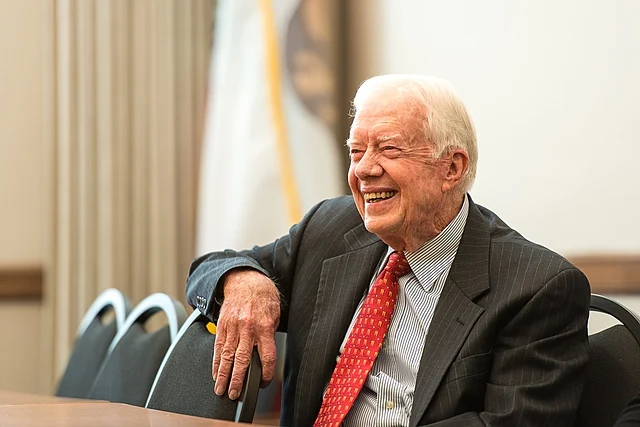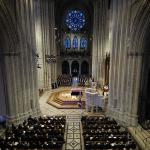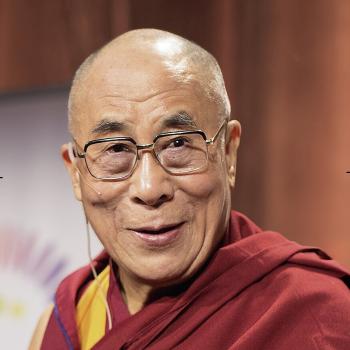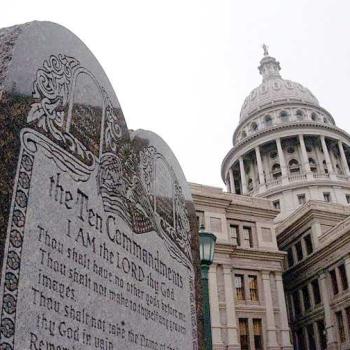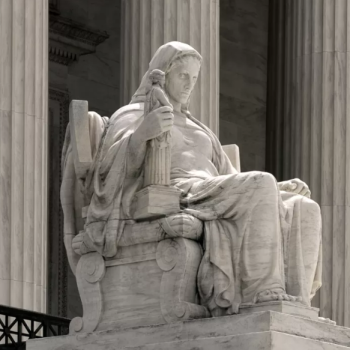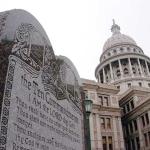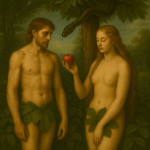Former U.S. President Jimmy Carter, who died on December 29, 2024, at the age of 100, was a progressive evangelical. He also was the most openly religious president in modern U.S. history. And if you find the term “progressive evangelical” confusing, do keep reading.
Carter was president of the United States from 1977 to 1981, and probably a lot of you are too young to remember those years. You may know of Carter’s post-presidency work with with Habitat for Humanity, an organization dedicated to providing decent, affordable homes for the poor. Carter’s involvement with Habitat for Humanity included hammer-and-nail work at building sites, often alongside his wife, Rosalynn, who died in 2023 at the age of 96. This work was an expression of his deep religious faith, which came out of an old tradition of progressive evangelicalism you may not know much about. So let’s take a look.
Evangelicalism: A Very Brief History
Just what is an “evangelical,” anyway? Evangelicalism is a branch of Christian Protestantism, but exactly what distinguishes an evangelical from a “mainline” Protestant can get fuzzy; see “Jimmy Carter and the Challenge of Identifying Evangelicals” by Frank Newport of the Gallup Organization. How evangelicals understand themselves, and which denominations are considered “evangelical” and which are not, has shifted over time.
The term “evangelical” was originally coined by Martin Luther in the 16th century — in German, Evangelische, from the Greek euangelion, “good news.” To Luther, an evangelical is one who spreads the good news of salvation presented in the Gospels and who relies on the Bible as the final religious authority.
By the 18th century, evangelicalism had become associated with a new trans-denominational Protestant movement that emphasized a personal experience of repentance and living according to Christ’s teachings. This movement spread to North America, and in the 1790s it touched off what came to be called the Second Great Awakening. (The First Great Awakening was a revivalist movement that happened earlier in the 18th century.) The Second Great Awakening had a huge impact on American culture and the course of 19th century U.S. history. This was an optimistic and egalitarian movement that stressed the importance of making a personal commitment to Christ. And it was the Second Great Awakening that originally forged American-style evangelical Christianity.
Progressive Evangelicalism and the Social Gospel
I wrote in an earlier post, “When Evangelicals Were Liberal,” of the Second Great Awakening:
Evangelicalism seemed a breath of fresh air at the time, especially in contrast to the prevailing Calvinism, which emphasized the sinfulness and depravity of humankind. The evangelicals preached that people had it in them to be better people, and Christ would show them the way. And a portion of evangelicals took Christ’s teachings about caring for those who are poor and oppressed quite seriously.
The Second Great Awakening fueled many 19th century causes, such as the abolition of slavery (see “Christianity and the Abolitionist Movement in the U.S.“) and women’s suffrage. Yes, women’s suffrage. And later in the 19th century many American evangelicals were leaders of a movement called the Social Gospel. The Social Gospel was active from about 1870 to 1920. Social Gospel advocates felt called to spread the Kingdom of Heaven by helping those struggling with poverty and oppression. They worked to end child labor, to increase wages and shorten the workweek, and to provide better housing for the poor. The Social Gospel was closely connected to the Progressive Era, 1890s–1920s, a time marked by social activism and reforms. Christians of many denominations joined the Social Gospel movement, but most of its leaders were evangelical.
Not all Christians, or even all evangelicals, supported the Social Gospel. There was a backlash against the Social Gospel from within Christianity. This backlash, along with opposition to new developments in science (notably evolution), gave birth to the fundamentalist movement of the late 19th and early 20th centuries.
Progressive Evangelicalism and Jimmy Carter
James Earle Carter, Jr., was born at a time when the Social Gospel and the Progressive Era were on the wane. But the ideals of those movements were not entirely dead. Note that Jimmy Carter was born five years before Dr. Martin Luther King, Jr., another Georgian who was dedicated to both Christianity and social activism.
Carter was raised a Southern Baptist. His father was a church deacon who taught Sunday school. Following Southern Baptist tradition, young Jimmy made a commitment to Christ and was baptized at the age of 11. And he reported having a religious reawakening in 1967, when he recognized his relationship with God had become superficial. As part of his self-rehabilitation in God he gravitated to the writing of two 20th century theologians in particular, Reinhold Niebuhr and Paul Tillich.
Carter was elected governor of Georgia in 1970. As governor, he supported equal rights for women, protection of the environment, assistance and opportunity for the poor, and racial equality and justice. And in his one term as President, he was way ahead of his time in promoting green energy. He even installed solar panels on the White House roof (which the next President, Ronald Reagan, removed). You will probably hear a lot of people mock Carter as President, but his administration accomplished more than he gets credit for. See, for example, Jimmy Carter’s underrated legacy: A strong, ethical America and a more peaceful world by Stuart E. Eizenstat at USA Today.
Progressive Evangelicalism in the Late 21st Century
The 1970s was a pivotal time for American evangelicalism. In 1973 a group of evangelical leaders, including prominent members of the Southern Baptist Convention, met in Chicago and produced a Declaration of Evangelical Social Concern that was thoroughly progressive. It called for equality of women and men, including within the church. It condemned racism and “the conspicuous responsibility of the evangelical community for perpetrating the personal attitudes and institutional structures that have divided the body of Christ along color lines.” It called for more equal distribution of the world’s resources to provide for all the world’s people. And it declared “We must resist the temptation to make the nation and its institutions objects of near-religious loyalty.” It is a thoroughly progressive document that is grounded in Christ’s teachings from the Gospels.
So what happened? A lot of powerful forces had been pulling White evangelicalism in a reactionary direction for a long time. One of these was the issue of school desegregation, which inspired many White southern congregations to organize alternative Christian schools that happened to be all White. One of the leaders of the southern segregationists was the evangelical Rev. Jerry Falwell (1933-2007). Falwell came to prominence by promoting racial segregation as properly Christian. In 1967 he opened a K-12 Whites-only academy, and in 1971 he co-founded Liberty University.
In 1970, after a Supreme Court Decision, the IRS declared that racially segregated schools were not eligible for tax-exempt status. This decision was challenged in many courts, and always failed. But it was during this period that conservative political operatives such as Paul Weyrich (1942-2008), a co-founder of the Heritage Foundation, began to contact segregationist ministers like Falwell. Weyrich persuaded Falwell and other segregationists that the only way to re-establish tax-exempt segregated schools was to form a coalition that would dominate Congress and the courts, and this would take some time. From this effort, the so-called “religious Right” was born. Falwell founded the Moral Majority in 1979.
See also “A Brief History of Christian Nationalism: Jerry Falwell and the Moral Majority.”
Progressive Evangelicalism: Postscript
In brief, the right-wing and lavishly funded Moral Majority effectively strangled progressivism in White evangelical churches, although it seems alive and well in many Black congregations to this day. Many of the same White evangelicals who had enthusiastically voted for the born-again Jimmy Carter in 1976 abandoned him in 1980 in favor of the more conservative Ronald Reagan. And so Carter was defeated after one term. He then began his long final career as a social activist for Christ. Do please read “Jimmy and Rosalynn Carter: A Remarkable Post-Presidency.” Note also that Carter left the Southern Baptist Convention in 2000 as the SBC moved further Right on women’s equality.
The religious-political coalition that elected Reagan has had its ups and downs. At some point it mostly abandoned segregation as a cause and instead took up opposition to abortion and LBGTQ rights. The Moral Majority was disbanded in 1989, but similar organizations rose up to take its place. We saw the power of of the coalition’s continuing influence last year in the presidential election. There are still a few White progressive evangelicals around — I have met them — but for the most part they are keeping their heads down.
More Suggested Reading
“Jimmy Carter: The Last Progressive Evangelical,” by Randall Balmer at Politico.
“The faith of Jimmy Carter: A born-again Christian who practiced his own version of progressive evangelicalism” by Liam Adams and Carla Hinton, USA Today Network
“For Jimmy Carter, a life of service, defined by faith,” by Harry Bruinius, Christian Science Monitor
